Here are some resolutions that Palm Beach gardeners may want to follow
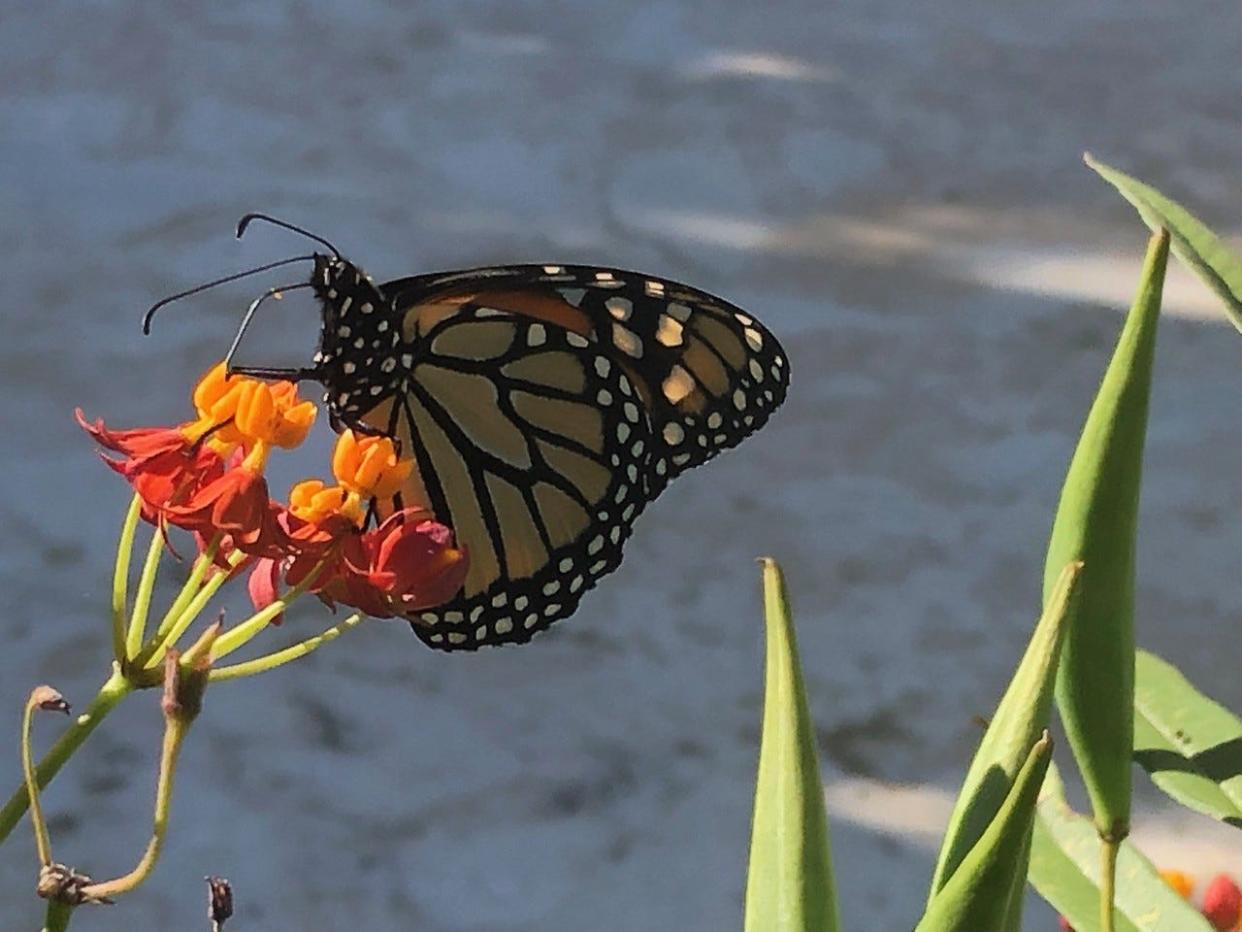
When I count my blessings at the close of the year, family and health always top the list, along with coffee, but I am also grateful to have a garden.
While I miss the change of seasons up north, the winter silhouettes of trees frosted with snow and glistening iced red holly berries, we Floridians can have gardens full of flowers year-round. I think of gardening as solace for the soul; there’s nothing quite like planting new flowers or pruning back some shrubs to find a specimen that you’d forgotten, or discovering a chrysalis on the back of a leaf that promises a beautiful butterfly.
All the orchids I’ve put on my palms, and in my gumbo limbo and live oaks, have rooted onto the trees and are sending out long shoots covered with buds about to open. Chattering birds in the oaks provide wonderful company while I work; at night we all enjoy the crickets’ music while sitting in the adjacent loggia. It’s kinda like a jungle paradise.
More:Green gardening: Easy ways to avoid using deadly chemicals on your landscape
Pollinator loss
The Harvard School of Public Health recently published a disturbing article on how pollinator loss has contributed to removing healthy foods from global diets, which has resulted in increases in chronic disease and excess deaths. The study states that “Increasing human pressure on natural systems is causing alarming losses in biodiversity,” including serious annual declines of insect populations. Key among these are pollinators, upon which 75% of all crops depend, including fruits, vegetables and nuts.
We in Palm Beach are all neighbors, sharing the beauty and benefits of this wonderful island. But every single day chemical trucks cross the bridges to spray poisons on our lawns and hedges. I have stopped and spoken to numerous technicians applying these chemicals. Many admit they are spraying imidacloprid for whitefly, a systemic neonicotinoid that kills every insect it touches, and which remains in the soil for years. Others will not tell me what products they are using, which is a bit frightening. Are they so bad we cannot even know what they are?
They all insist the products are “perfectly safe,” although neonicotinoids kill all insects and are known human carcinogens. Chemical companies have convinced homeowners to set up weekly or monthly “preventative“ treatments, which are far worse for the environment because plants are sprayed routinely rather than when there is actually a problem. I passed two properties being treated with imidacloprid today. The huge hedge on one corner was literally dripping with pesticide when I asked the technician about the ramifications for passing pedestrians and babies in strollers. He assured me the hedges would be dry in an hour or so. Meanwhile, the liquid chemical runoff was pouring down the sidewalk, heading ultimately to the Intracoastal. It’s just unnecessary and sad.
The new classes of insecticides introduced in the last 20 years, including neonicotinoids and fipronil, have been particularly damaging as they are used routinely and persist in the environment. They sterilize the soil, killing the microorganisms upon which plants depend. And the negative effects permeate onto neighboring lands. In test areas in Germany, 75% of insect losses were reported in untreated protected areas adjacent to lands treated with chemicals.
Insects are the base of all food chains that support biodiverse ecosystems. They pollinate the majority of plant species, maintain healthy soil, decompose waste, recycle nutrients, control pests and, if you consider fireflies, butterflies and crickets, provide endless hours of entertainment and beauty. Love them or loathe them, we humans cannot survive without them. Let’s not be so quick to kill them all off.
More:Norton Gardens' new butterfly oasis shows benefits of non-natives
Resolutions for the new year
Here are a few resolutions we might all consider for 2023.
1. Let’s restore biodiversity in our landscapes by adding a variety of species and by discouraging monocultures, which endanger wildlife habitat.
2. Let’s add native species to support the high-protein butterflies and insects necessary for our birds and wildlife.
3. Let’s reduce the amounts of chemicals we pour on our landscapes that kill our beneficial insects and pollinators, poison our air and soils, and also leach into our aquifers.
More:Green gardening: These plant species will do well when harsh weather hits Palm Beach
To start the year off right, here are some wonderful native plants to promote biodiversity and to add beauty and interest to your gardens: Gumbo limbo (Bursera simaruba) is one of my favorite trees, with gorgeous smooth cinnamon to bronze-colored bark. A fast grower in full sun or shade, this will reach an ultimate height of 50 feet. While deciduous for a short time in winter, the small white flowers at that time attract pollinators, and birds relish the fruits.
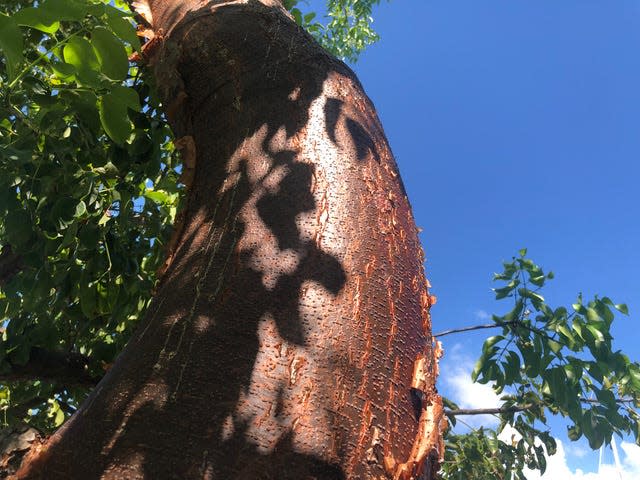
Cinnamon bark (Canella winterana) is another terrific small tree that should be more often added to Palm Beach gardens. With a tidy open growth habit and fragrant, glossy evergreen foliage, this is great as a specimen or for informal screening. Salt- and drought-tolerant, happy in sun or shade, this is nonetheless listed as endangered by the state of Florida. Showy clusters of red flowers in summer attract hummingbirds and provide nectar for Schaus’ swallowtail and other butterflies. The red fruits are eaten by birds and mammals. It also has many medicinal uses.
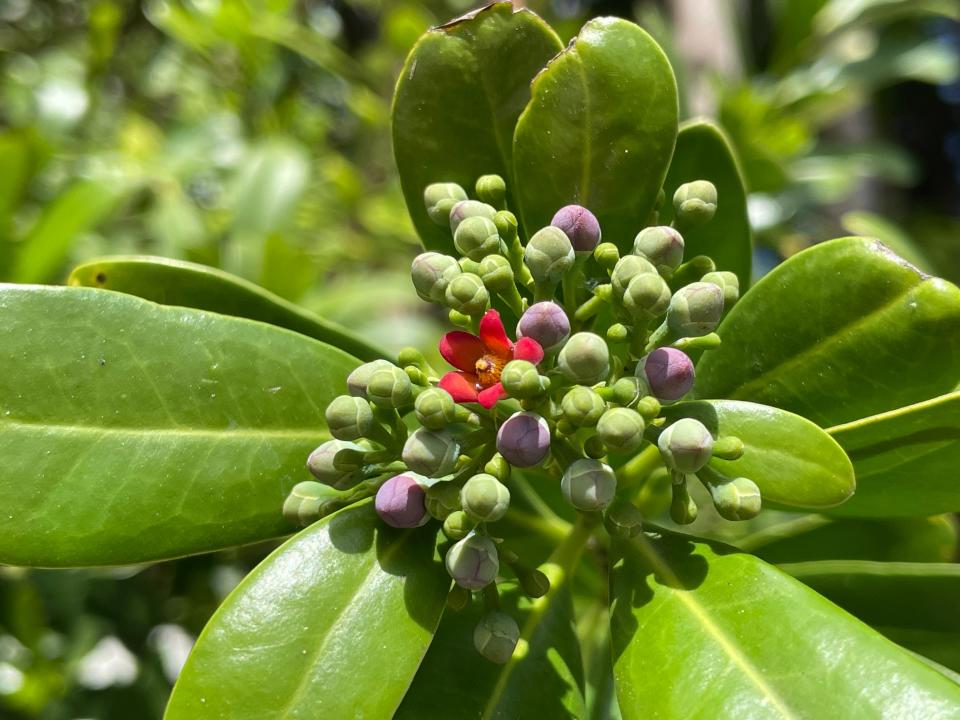
I spent the afternoon weeding and pruning in the garden and came across numerous denuded stalks of milkweed (Aesclepias sp.), which I promptly cut back to a few inches off the ground. Most of you know that milkweed is the host plant for the monarch butterfly, whose numbers are in serious decline. Monarchs lay their eggs on the leaves and when the tiny caterpillars hatch out, they devour the foliage before crawling off to form their chrysalis from which they will emerge as butterflies.
It is best to cut the leafless stalks back to the ground so they don’t harbor the dangerous OE (Ophryocystis elektroscirrha) protozoan bacteria, which can build up in non-native milkweed species and kill the butterflies. We need to plant milkweed whenever possible for monarchs but try to ensure that you get one of the three native species: Asclepias tuberosa, A. incarnata or A. perennis.
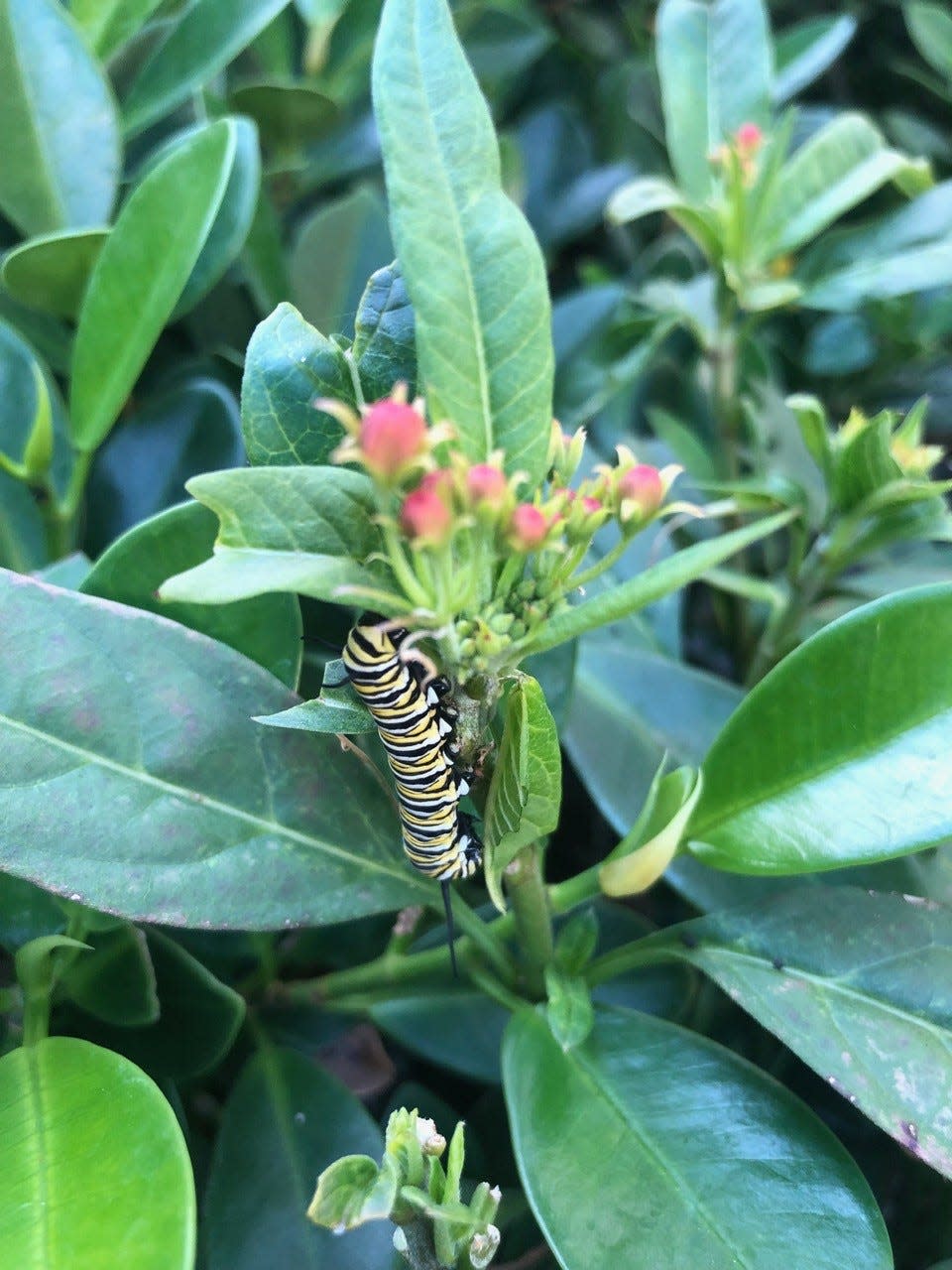
Rouge plant (Rivina humilis) is full of bright-red berries as we speak, making it a standout in the garden at this time of year. This small border plant does well in shady locations so I use it as an understory next to some pineland croton and blue plumbago. Spikes of tiny white flowers appear along with the berries, so this does double duty in the ornamental department. Birds love the fruits that appear year-round.
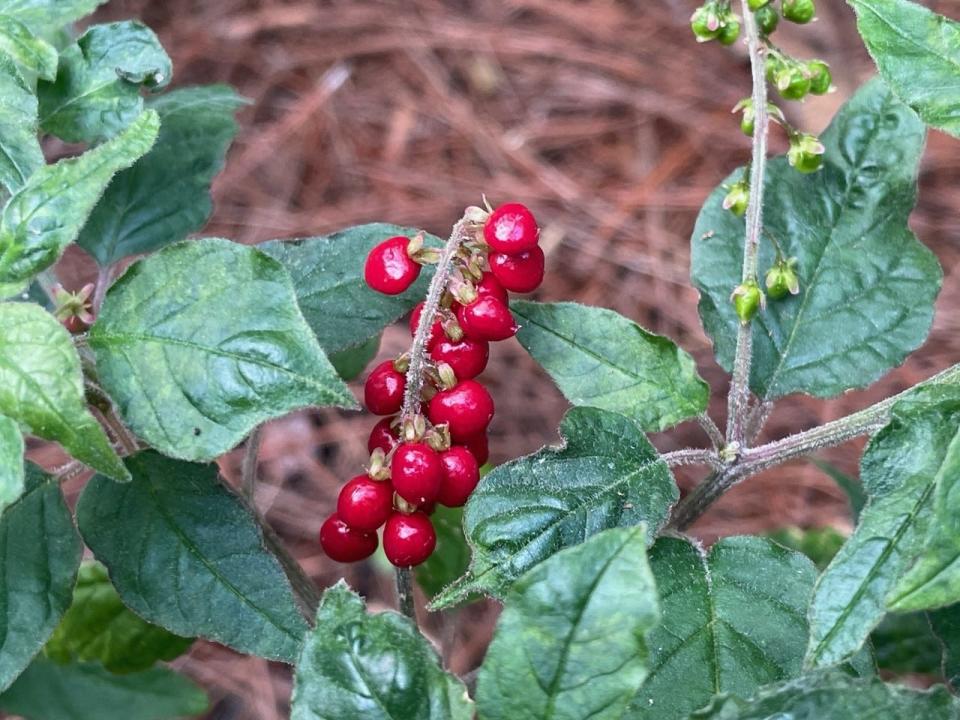
Finally, the cheery blue flowers of mistflower or ageratum (Conoclinium coelestinum) are some of the best butterfly attractors in Florida. This likes sun, but I have found it does fine in part shade as well; it’s beautiful as a border plant, with its dense puffy heads of lavender blue flowers. This provides nectar for numerous skippers and other butterflies.
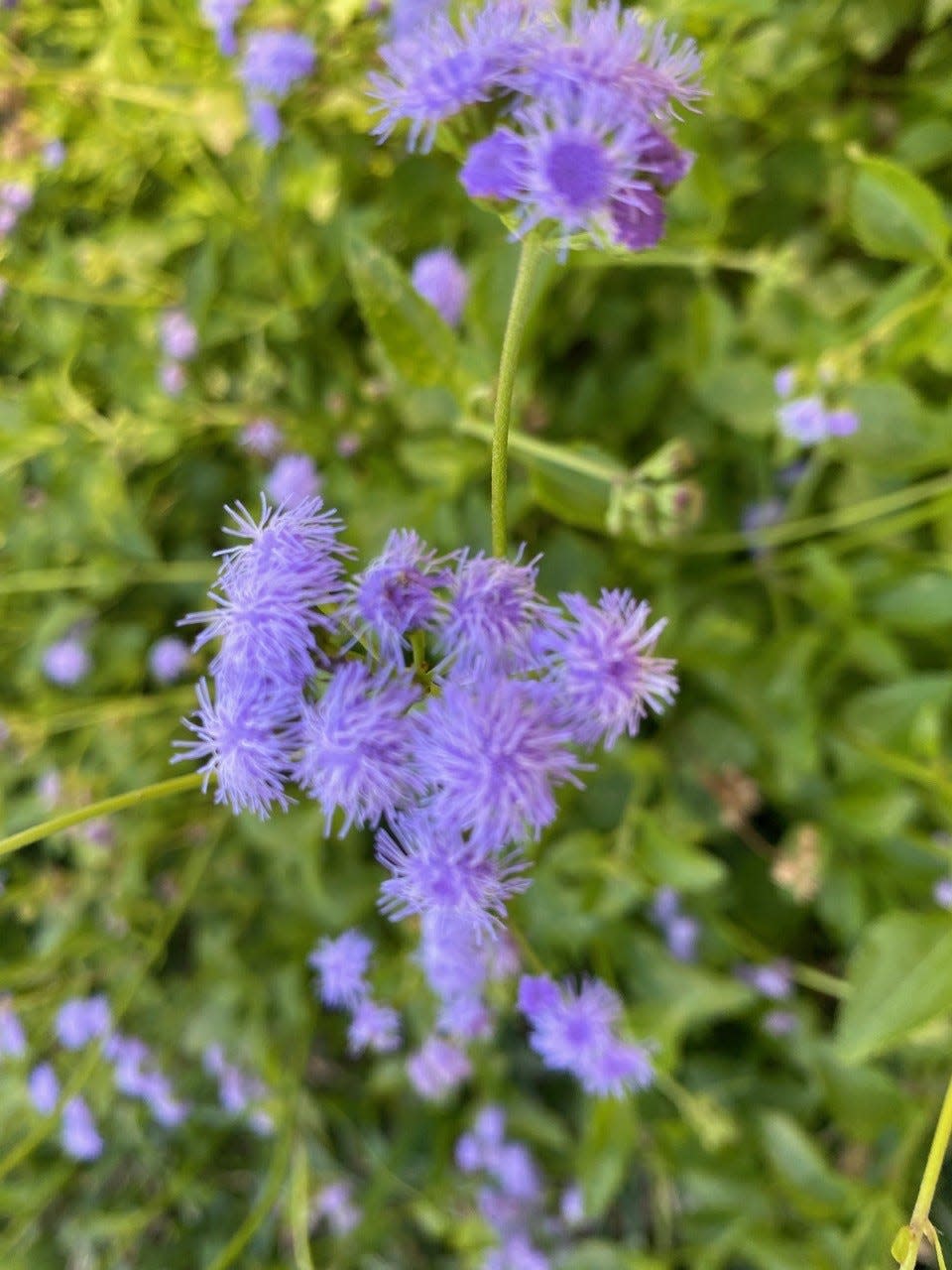
Enjoy your chemical-free gardens and Happy New Year!
This article originally appeared on Palm Beach Daily News: Gardening in Palm Beach is 'solace to the soul'

